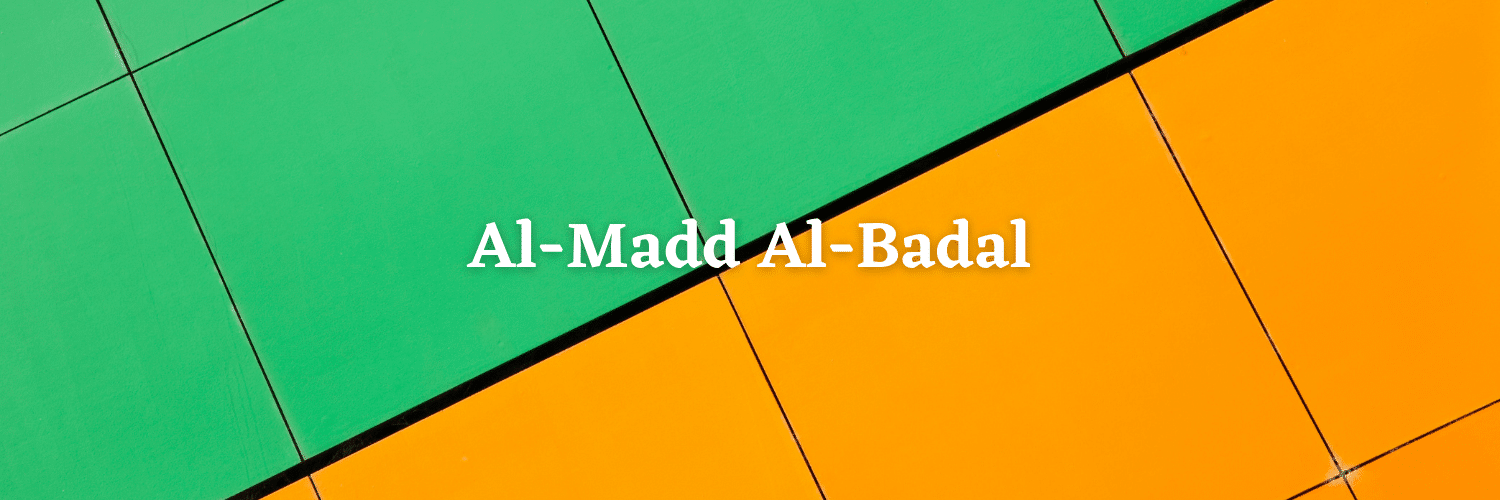This madd is very simple. Almost as simple as the madd tabee‘ee, in fact. You might just be surprised to know you have been doing this madd since you first started reading Quran without even realising it… Have a read for yourself….
Al-Madd Al-Badal: substituted prolongation occurs when a hamza (?) preceeds a harf madd (? or ? or ?).
This madd is sounded for two counts when continuing recitation or stopping after the word with the madd.
This madd is only found within one word, and occurs when the hamza has the respective diacritic on it, e.g. if the harf madd ‘waaw’ follows a hamza, the hamza has a dammah on it.
![]()
Examples of al-madd al-badal:
آدَمَ
Aadama
أُوتُوا
Ootoo
إِيمَانًا
Eemaanan
![]()
The following is an example of a word that does NOT fulfil the conditions of a madd badal, and hence it is not sounded for two counts:
أَيْمَانَهُمْ
Aymaanahum
To reiterate, the reason this word doesn’t have madd badal is because the hamza before the harf madd has a diacritic not suitable for the harf madd. The suitable diacritic for yaa is kasra, however the hamza here has a fat-ha.
![]()
Resources Link:
– ‘Jadwal Al-Mudood’, fifth madd listed
– ‘Tajweed Basics Foundations And More’ covers a range of mudood
![]()
Note, these documents are found on the resources page.




